The Hubble Space Telescope "Extreme Deep Field" View
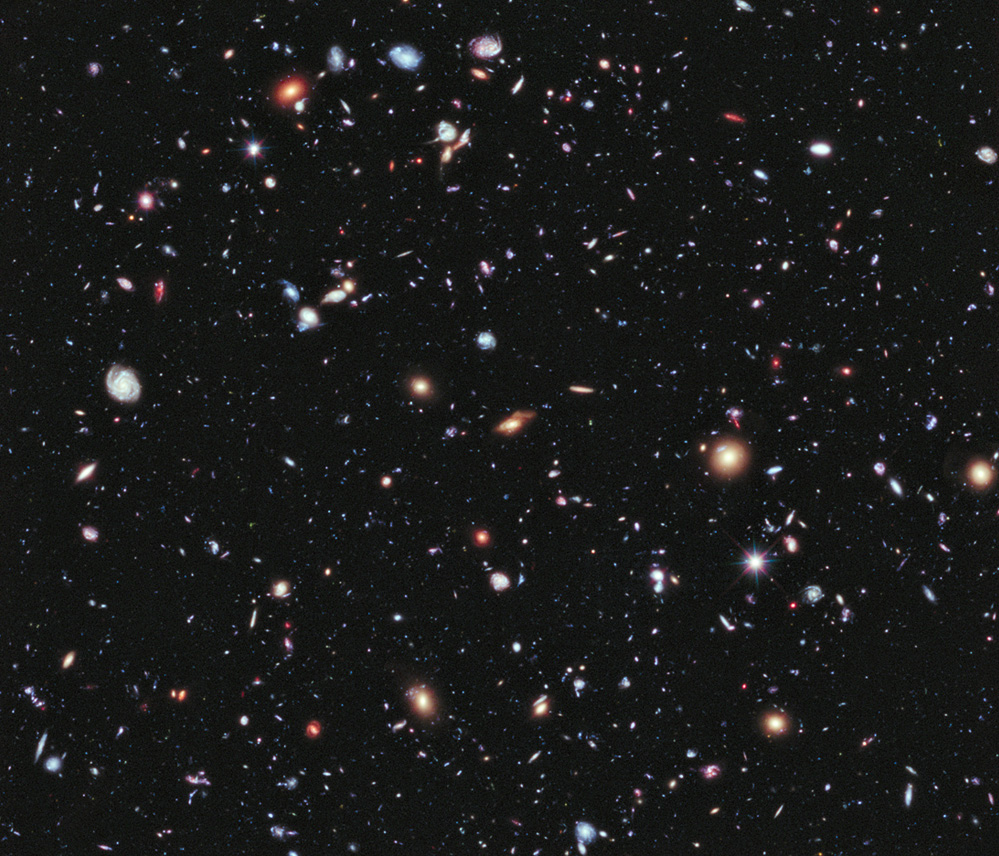
Photo Credit: NASA; ESA; G. Illingworth, D. Magee, and P. Oesch, University of California, Santa Cruz; R. Bouwens, Leiden University; and the HUDF09 Team.
From NASA, with the following description: "Called the eXtreme Deep Field, or XDF, the photo was assembled by combining 10 years of NASA Hubble Space Telescope photographs taken of a patch of sky at the center of the original Hubble Ultra Deep Field.
The Hubble Ultra Deep Field is an image of a small area of space in the constellation Fornax, created using Hubble Space Telescope data from 2003 and 2004. By collecting faint light over many hours of observation, it revealed thousands of galaxies, both nearby and very distant, making it the deepest image of the universe ever taken at that time.
The new full-color XDF image is even more sensitive, and contains about 5,500 galaxies even within its smaller field of view. The faintest galaxies are one ten-billionth the brightness of what the human eye can see."
Below are four segments of this total image to show higher resolution, arranged clockwise in quadrants starting with the upper left.
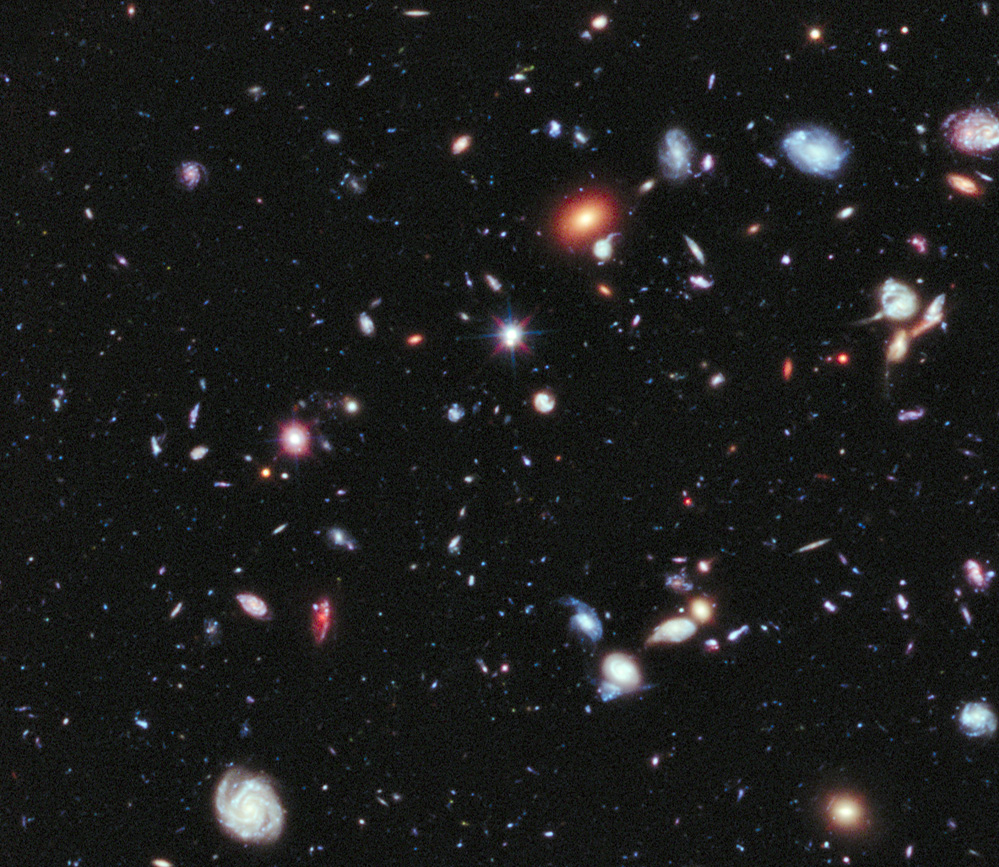
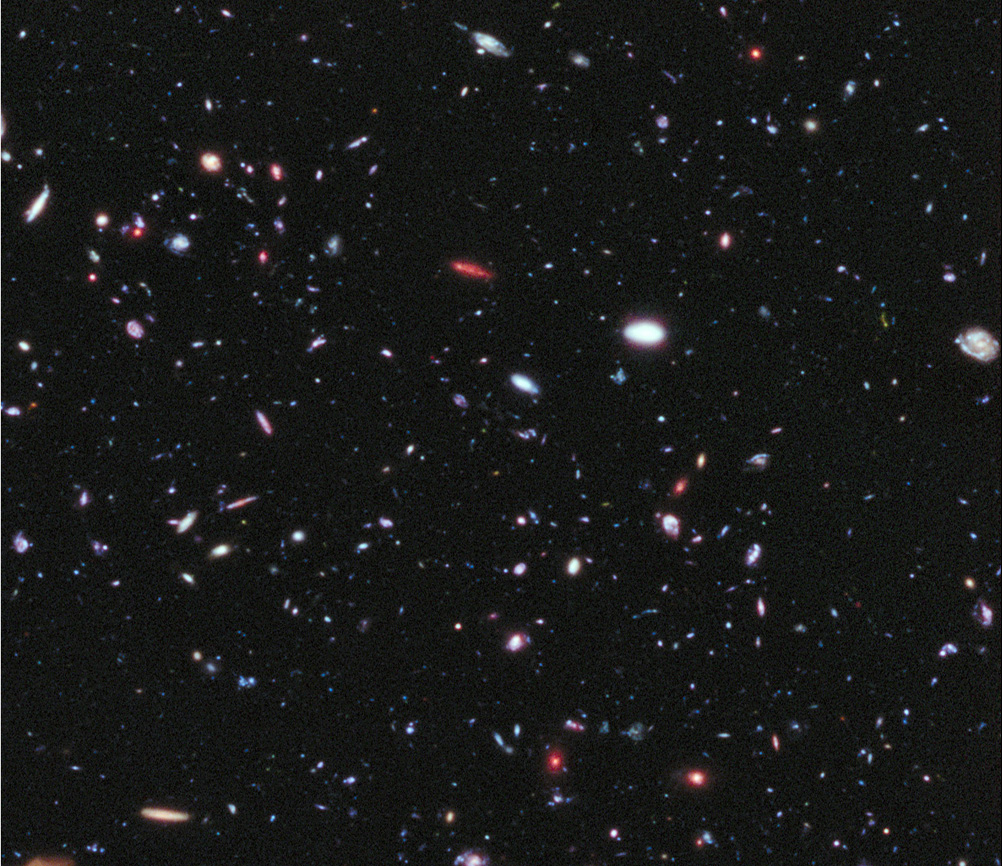
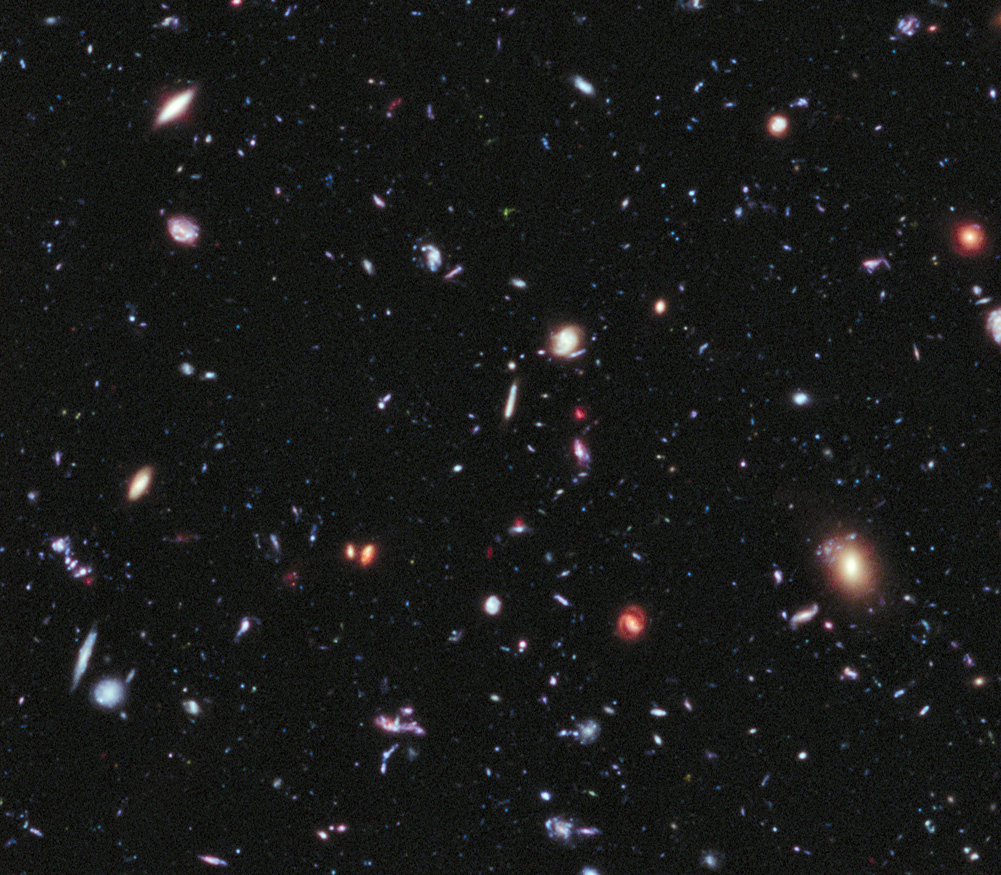
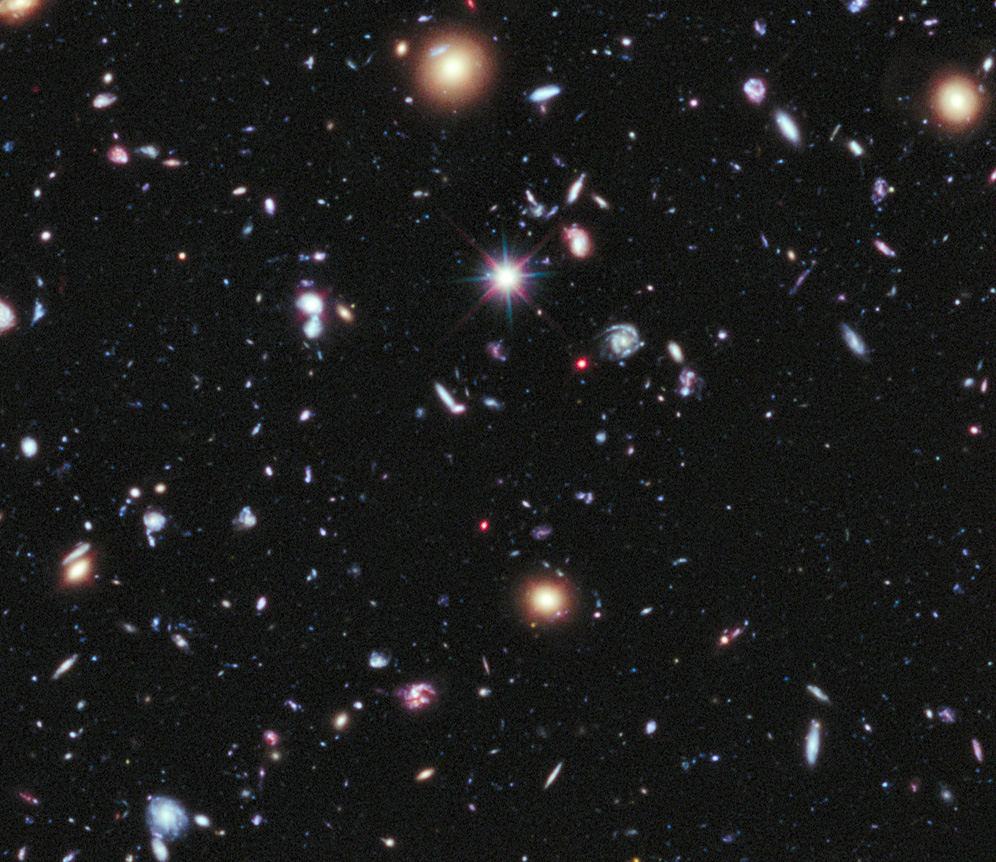
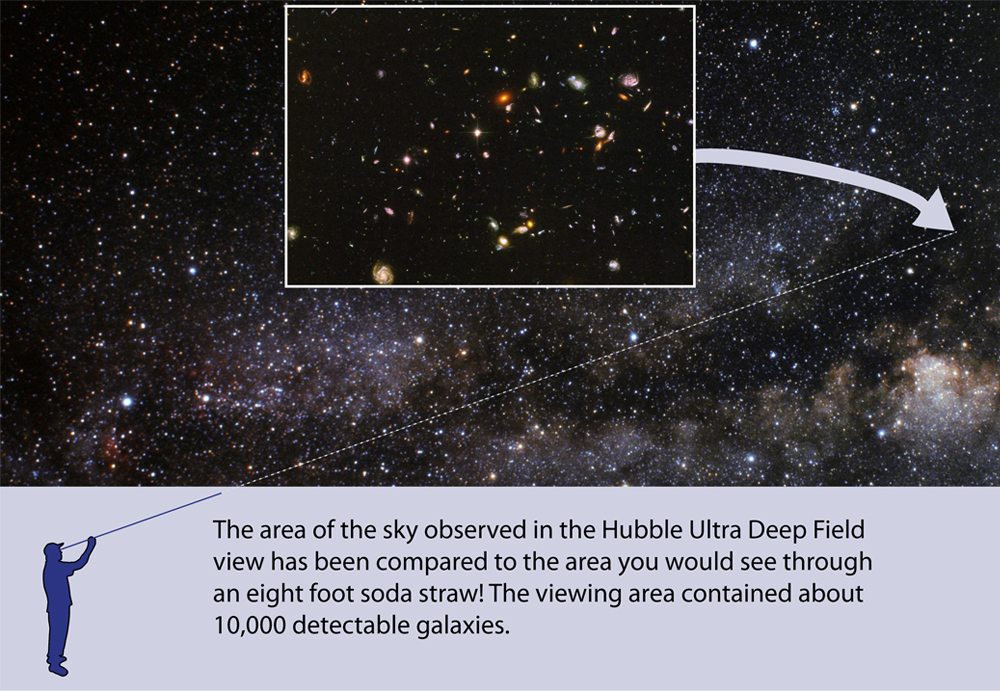
| The illustration above depicts the angular size of the earlier Hubble Ultra Deep Field as that which you would get through an 8-foot long soda straw. The XDF spans about 2 arc minutes compared to about half a minute of arc for the moon, so about 15 times smaller.
From NASA's description: "Magnificent spiral galaxies similar in shape to our Milky Way and the neighboring Andromeda galaxy appear in this image, as do the large, fuzzy red galaxies where the formation of new stars has ceased. These red galaxies are the remnants of dramatic collisions between galaxies and are in their declining years. Peppered across the field are tiny, faint, more distant galaxies that were like the seedlings from which today's magnificent galaxies grew. The history of galaxies -- from soon after the first galaxies were born to the great galaxies of today, like our Milky Way -- is laid out in this one remarkable image.
Hubble pointed at a tiny patch of southern sky in repeat visits (made over the past decade) for a total of 50 days, with a total exposure time of 2 million seconds. More than 2,000 images of the same field were taken with Hubble's two premier cameras: the Advanced Camera for Surveys and the Wide Field Camera 3, which extends Hubble's vision into near-infrared light." "The universe is 13.7 billion years old, and the XDF reveals galaxies that span back 13.2 billion years in time. Most of the galaxies in the XDF are seen when they were young, small, and growing, often violently as they collided and merged together. The early universe was a time of dramatic birth for galaxies containing brilliant blue stars extraordinarily brighter than our sun. The light from those past events is just arriving at Earth now, and so the XDF is a "time tunnel into the distant past." The youngest galaxy found in the XDF existed just 450 million years after the universe's birth in the big bang." | 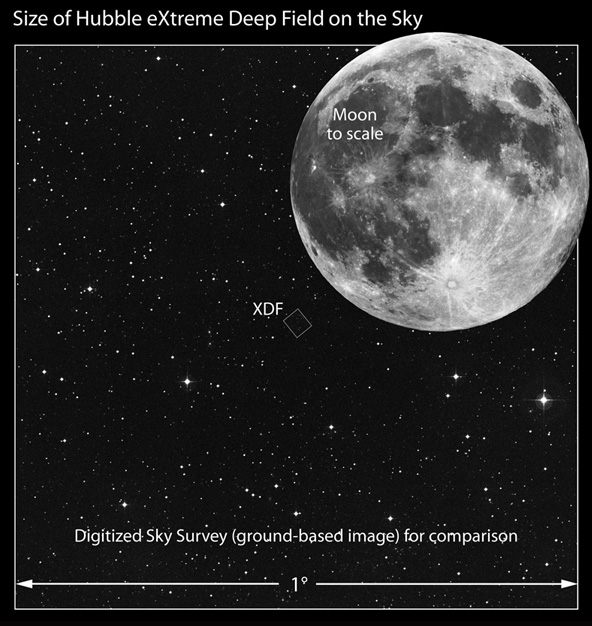 |
NASA on the Extreme Deep Field
| Classification of galaxies | Star Index |
| Another Hubble deep space view |
Galaxy concepts
| HyperPhysics***** Astrophysics | R Nave |